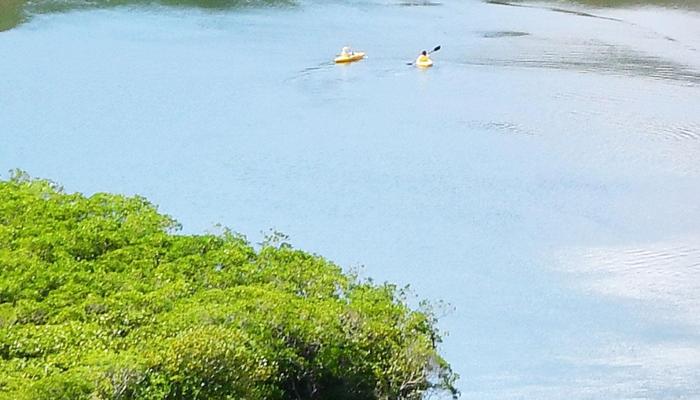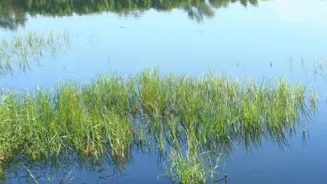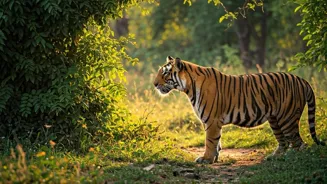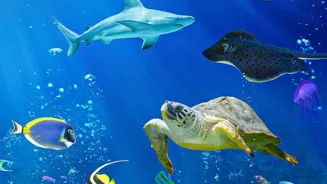Discover the enchanting world of the Ganges River Dolphin. Dive into 10 intriguing facts and learn why protecting them is crucial
Namaste, readers! Our very own Ganga, the river we consider so sacred, is
home to a remarkable creature: the Ganges River Dolphin, also known as the 'Susu'. Sadly, these intelligent and gentle animals are facing a tough time. They are endangered, which means their numbers are dwindling.
It's time we learn more about them and understand why protecting them is so important. Let’s dive in and discover some fascinating facts about the Ganges River Dolphin that will make you appreciate them even more.
Ganges River Dolphins: Blind but Adaptive, Vital for River Health
Firstly, the Ganges River Dolphin is unique because it’s virtually blind! Can you imagine navigating life without sight? These dolphins live in murky waters where visibility is extremely low. So, over time, they've adapted and rely on echolocation to find their way around and hunt for food.
Echolocation is like a natural sonar system. They emit clicking sounds, and when these sounds bounce off objects, like fish, the dolphins can interpret the echoes to determine the size, shape, and location of the object. It’s an incredible feat of adaptation!
Another interesting fact is that they are found only in the freshwater rivers of India, Bangladesh, and Nepal, primarily in the Ganges-Brahmaputra-Meghna river system. This makes them a truly special and localized species. Their presence indicates the health of the river ecosystem.
When dolphin populations are thriving, it means the river is relatively clean and supports a healthy food web. However, their dwindling numbers are a warning sign that the rivers are facing serious challenges.
We must remember these are not just animals; they’re indicators of the health of our precious rivers.
Ganges River Dolphins: Ancient, unique, solitary creatures in danger
Did you know that the Ganges River Dolphin is one of the oldest creatures living in the Ganga? Scientists believe that these dolphins have been around for millions of years, making them ancient inhabitants of these rivers.
They are considered a "living fossil" because their appearance has changed very little over time. This makes them incredibly important from a biodiversity perspective.
They represent a lineage that has survived through many environmental changes, and studying them can provide valuable insights into the history of our planet. Another peculiar fact is that these dolphins breathe through a blowhole on top of their head.
Just like whales, they need to surface regularly to take a breath. This is why you often see them making a characteristic "susu" sound as they exhale air, hence the local name "Susu.
" These amazing creatures are also primarily solitary animals, meaning they usually prefer to live alone or in very small groups. This behaviour makes them particularly vulnerable to threats, as they don't have the protection of a large pod like some other dolphin species.
They are highly intelligent and are capable of complex behaviours. They are often seen playing and interacting with each other, showcasing their social nature despite their solitary tendencies.
Ganges River Dolphins face threats from habitat loss, pollution, entanglement, and hunting
The diet of a Ganges River Dolphin mainly consists of small fish and invertebrates found in the riverbed. This diet highlights their role as important predators in the river ecosystem, helping to keep the populations of other species in check.
Their feeding habits also contribute to nutrient cycling within the river, as they consume and redistribute organic matter. Sadly, one of the main reasons why the Ganges River Dolphin is endangered is because of habitat loss.
Dams and barrages built across the rivers disrupt their natural movement and prevent them from accessing important feeding and breeding grounds. Pollution from industrial and agricultural sources also contaminates their habitat, making it difficult for them to survive.
The presence of plastic and other debris in the rivers can also be harmful, as dolphins can accidentally ingest these materials, leading to health problems and even death. Another major threat is entanglement in fishing nets.
Dolphins can get caught in these nets and drown if they are unable to surface for air. Illegal hunting, though less common now than in the past, also poses a risk to their survival. Conservation efforts are crucial to protect these amazing creatures and ensure their survival for future generations.
Ganges River Dolphin conservation needs community involvement for success
The Ganges River Dolphin is legally protected in India, Bangladesh, and Nepal, but enforcement of these laws is often weak. Designated protected areas, such as Vikramshila Gangetic Dolphin Sanctuary in Bihar, India, have been established to provide safe havens for these dolphins.
However, these protected areas are not always effectively managed, and illegal activities, such as fishing and pollution, can still occur within their boundaries. Community involvement is essential for the success of conservation efforts.
Local communities who live along the rivers can play a vital role in protecting dolphins and their habitat by participating in monitoring programs, reporting illegal activities, and promoting sustainable fishing practices.
Awareness campaigns are also important to educate people about the importance of protecting these amazing creatures and the rivers they call home. We must educate communities to stop causing damage to the habitat of the Gange's river dolphins.
Organizations unite to save Ganges River Dolphin through research, conservation, and community involvement
Several organizations are working tirelessly to protect the Ganges River Dolphin and its habitat.
These organizations conduct research to better understand dolphin populations and their behaviour, implement conservation programs to reduce threats, and work with local communities to promote sustainable resource management.
Governments, non-governmental organizations, and international agencies must work together to implement effective conservation strategies. This includes strengthening law enforcement, improving habitat management, and promoting sustainable development practices.
You can also support conservation efforts by donating to organizations that are working to protect the Ganges River Dolphin or by volunteering your time to help with research or outreach activities. Every small action can make a big difference in ensuring the survival of these amazing creatures.
Even spreading the word and raising awareness among your family and friends can help to create a more dolphin-friendly world.
Protect the Ganges River Dolphin and its habitat for a sustainable future
So, what can you do to help? Firstly, be mindful of your actions and how they impact the environment. Reduce your use of plastics and dispose of waste properly to prevent pollution from entering the rivers.
Support sustainable fishing practices by choosing fish that are caught in an environmentally responsible manner. Educate yourself and others about the importance of protecting the Ganges River Dolphin and its habitat.
By working together, we can ensure that these amazing creatures continue to thrive in the rivers of India, Bangladesh, and Nepal for generations to come. Remember, the fate of the Ganges River Dolphin is intertwined with the fate of the rivers themselves.
By protecting these dolphins, we are also protecting the water resources that are essential for the health and well-being of millions of people.
Let us all be responsible stewards of our environment and work together to create a brighter future for the Ganges River Dolphin and the rivers they call home. Jai Hind!
AI Generated Content. Glance/InMobi shall have no liability for the content










